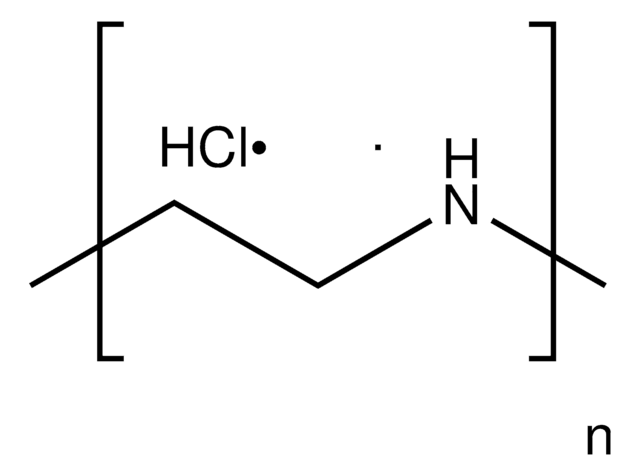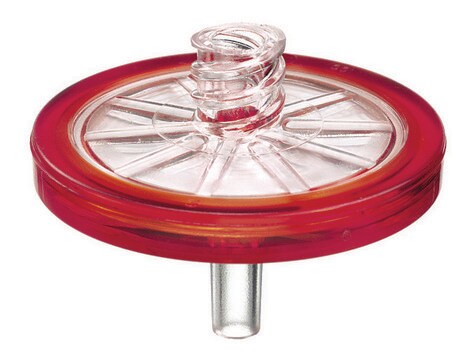408727
Polyethylenimine, branched
average Mw ~25,000 by LS, average Mn ~10,000 by GPC, branched
Synonym(s):
aziridine, homopolymer, PEI
About This Item
Recommended Products
Quality Level
form
viscous liquid
mol wt
average Mn ~10,000 by GPC
average Mw ~25,000 by LS
impurities
≤1% water
refractive index
n20/D 1.5290
viscosity
13,000-18,000(50 °C)
bp
250 °C (lit.)
density
1.030 g/mL at 25 °C
SMILES string
C1CN1
InChI
1S/C2H5N/c1-2-3-1/h3H,1-2H2
InChI key
NOWKCMXCCJGMRR-UHFFFAOYSA-N
Looking for similar products? Visit Product Comparison Guide
Related Categories
General description
Application
PEI can be used to functionalize single-walled nanotubes (SWNTs) to improve their solubility and biocompatibility while maintaining the structural integrity of the original SWNT. Covalently functionalized SWNTs find application in CO2 absorption and gene delivery.
Branched PEI can also be used to modify the surface properties of adsorbents. PEI-modified hydrous zirconium oxide/PAN nanofibers are used for the defluorination of groundwater as they show high fluoride adsorption capacity and a wide working pH range.
Features and Benefits
Branched PEI has better complexation andbuffering capacity.
Physical form
Signal Word
Warning
Hazard Statements
Precautionary Statements
Hazard Classifications
Acute Tox. 4 Oral - Aquatic Chronic 2 - Eye Irrit. 2 - Skin Sens. 1
Storage Class Code
10 - Combustible liquids
WGK
WGK 2
Personal Protective Equipment
Choose from one of the most recent versions:
Already Own This Product?
Find documentation for the products that you have recently purchased in the Document Library.
Customers Also Viewed
Articles
New methods for materials fabrication at the micro- and nanoscale will drive scientific and technological advances in areas of materials science, chemistry, physics, and biology. The broad diversity of potentially relevant materials, length scales, and architectures underscores the need for flexible patterning approaches. One important example is the fabrication of 3D periodic structures composed of colloidal, polymeric, or semiconductor5 materials.
Professor Yoshiki Katayama (Kyushu University, Japan) discusses recent advances in drug delivery systems and strategies that exploit the EPR effect, with a special focus on stimuli-responsive systems based on novel materials.
We present an article that discusses two applications in particular; first, using these layers as polyelectrolyte membranes to control permeability.
Our team of scientists has experience in all areas of research including Life Science, Material Science, Chemical Synthesis, Chromatography, Analytical and many others.
Contact Technical Service









